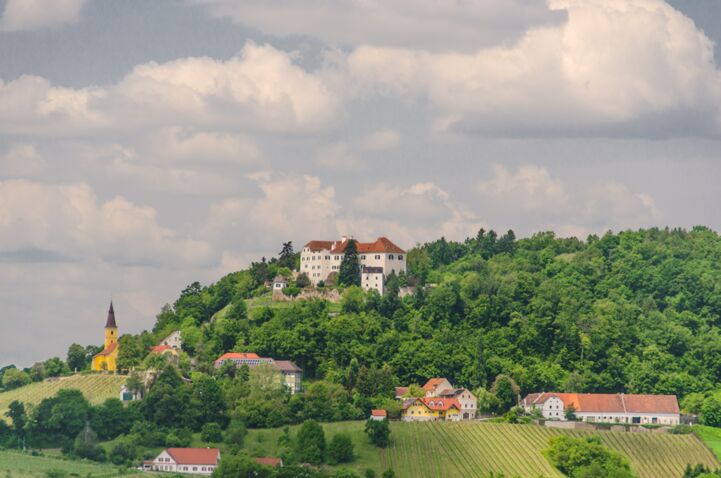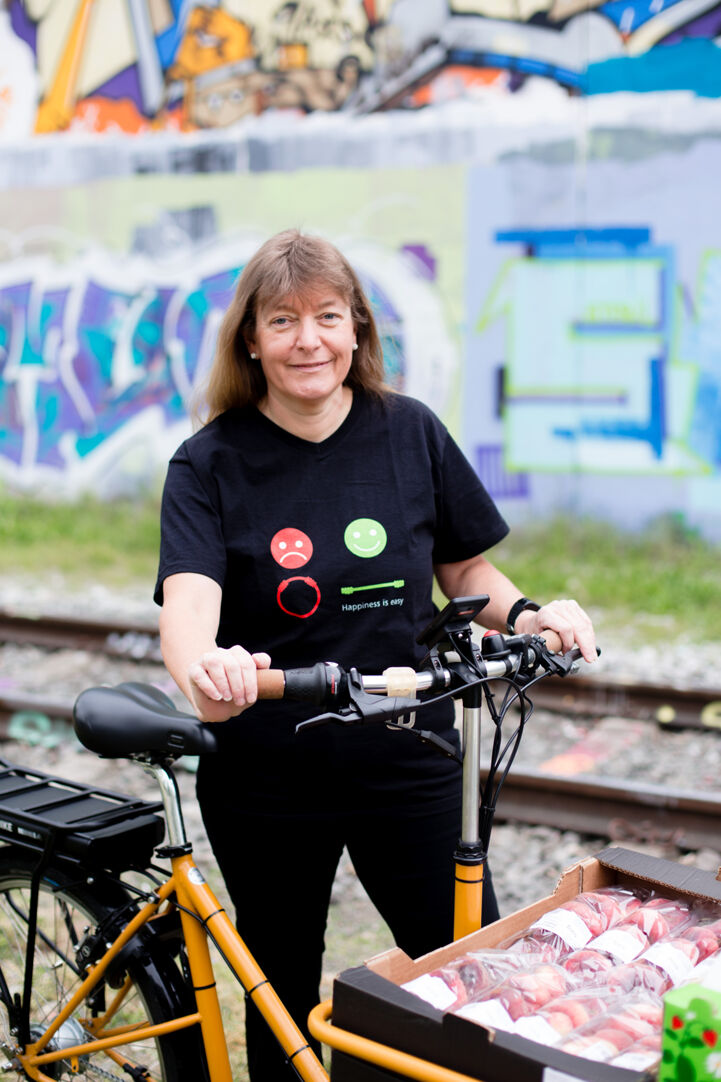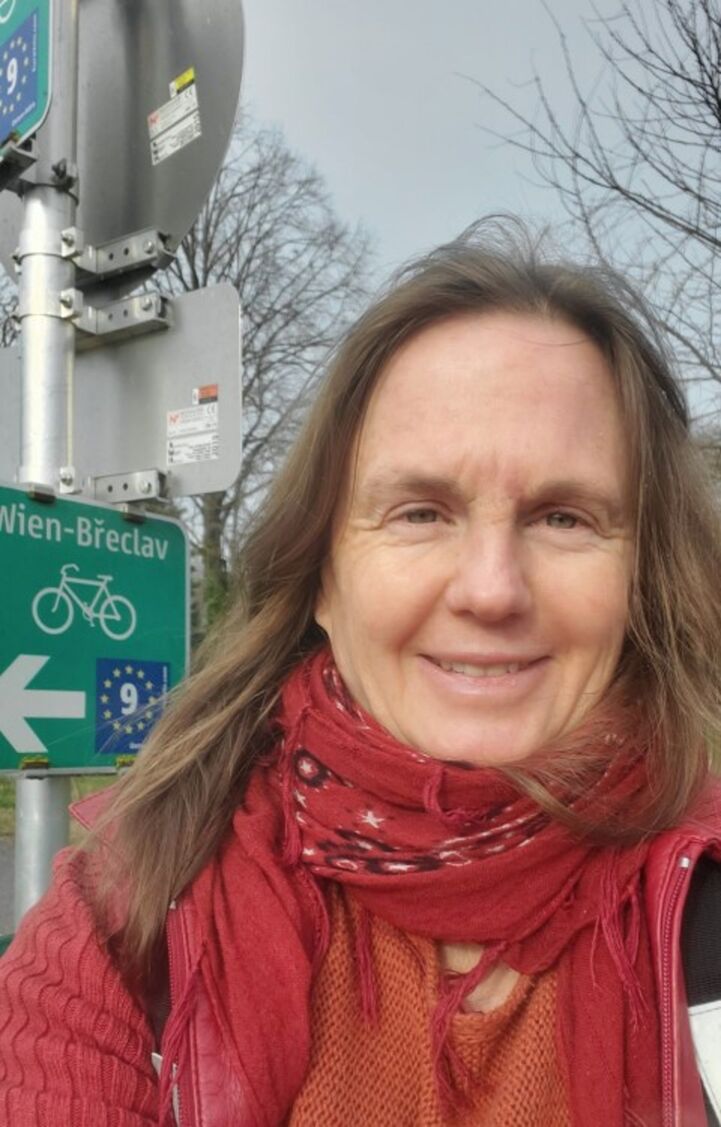What is it like to work as a EuroVelo Route Inspector?
In 2023, EuroVelo 9 – Baltic-Adriatic was the first EuroVelo route to undergo a full survey using the European Certification Standard methodology in Austria. Analysis of survey results is ongoing and will allow stakeholders to pinpoint critical issues along the route, from a cyclist’s point of view, and to propose an action plan with concrete improvements that could be made to the route on the short, medium, and long term. A summary of survey results and conclusions will be published in a few months.
Other EuroVelo routes will follow, in the frame of a 7-year contract established between the Austrian National EuroVelo Coordination Centre and ECF on the use of the ECS methodology to assess the Austrian cycle route network. Julia and Heidi are the EuroVelo Route Inspectors in charge of these surveys. Following their first experience in the field, we asked them a few questions to get their impressions of an ECS survey.

Are you curious to know more about ECS? Do you want to work from the saddle of your bicycle? Or do you think that this quality assessment methodology, specifically designed for long-distance cycle routes and a key tool to assess investment needs and lobby for better infrastructure, would be an asset for your region or country? You too can become a EuroVelo Route Inspector! More information here.
See also the ECS leaflet for a clear and concise presentation of the methodology’s quality criteria and usage, or this document for a more thorough introduction.
Meet Julia & Heidi, EuroVelo Route Inspectors from Austria
Could you present yourselves briefly? What are your backgrounds, where do you work and what are your personal connections to the bicycle?

Julia: I am a geographer and cartographer, working for Radlobby-Radtourismus in the cycling tourism team. My work is mainly connected to the evaluation of touristic cycling routes, mostly in Lower Austria, as well as the creation of handbooks for signposting. Additionally, I am (on a voluntary basis) the contact person for cyclists and pedestrians in our community. I have been using the bicycle since I was a teenager, for my daily journeys, if they are not too long. It brings me freedom and joy and I often think, compared to other people, that it is a real luxury to be able to cycle to work, to the station, to go shopping and so on, as distances are not too big. This was a part of how we selected our living place – so that we would be able to do most of our journeys by bike.
Heidi: I am a biologist, working at the Research Management Department and active in the council works of the Medical University of Graz. I cycle daily, minimum 10 km one-way to go to work and back. I am also a board member of the bicycle advocacy group of Radlobby Austria, chairperson of Radlobby Styria, involved in several bicycle projects and volunteering in the Austrian National Coordination Centre.
What was it like for you to conduct an ECS survey for the first time? How long did it take, what did you like about it and what surprised you?

Julia: I have been doing cycling route evaluations for 9 years now, but this was the first time I did it with an app on my mobile phone instead of using paper, GPS and a camera. Before starting I was a bit afraid to encounter problems using the mobile phone (e.g. with too much sun or running out of battery). But everything worked well, and I liked the handling of the app, having only one device with me. However, one must really concentrate. It took me 5 hours and 20 minutes to survey 40 kilometers in a slightly hilly region!
Heidi: During the last 15 years I have been involved in short surveys and consulting work for municipalities, in cooperation with the Austrian Province of Styria. A few years ago, I surveyed the “Murradweg” cycle route, following the ADFC methodology criteria using classical pen and paper. As a result, I was looking forward and excited to use the ECS survey app. In order to gain experience and confidence, I first went on a 17-km test trip on EuroVelo 14 – Waters of Central Europe which goes right next to my home, and this took me two hours and a half. This way I noticed that even if the survey requires concentration, the ECS app really facilitates this work. It is easy to handle and offers many possibilities.
From your experience, what would you say are the assets of the ECS app and methodology when gathering data about a national cycle route network, and where is there room for improvement?
Julia: It is great to be able to gather in a single app the survey of geolocated points and line data, giving them multiple attributes at the same time, combined with photos. I am happy about the possibility to download data and import it into a GIS system to create overview maps with different contents. It is not complicated. In terms of improvements, for Austria we would need an additional speed limit for cars of 100 km/h. Editor note: in the ECS methodology, anything above 80 km/h is considered too fast for cyclists to be on the road – so it doesn’t make a difference to have an additional speed limit, though this can be relevant information for reporting.
Heidi: The data quality obtained using the ECS survey app combined with the EuroVelo backend is very good and detailed. It is excellent that the photos are directly saved with the GPS location. Initially, as I lack experience in working with geographical data, I was not familiar with GIS tools and it took me some time to familiarise with the subject and understand how to handle the data files and how to create maps. But I managed to self-study this with the excellent support of the ECF team and my experienced Austrian colleague Julia Beckel. An interface for the export of data into a tool like QGIS or an extra training on data analysis would be helpful.
What are the next steps of the ECS surveys in Austria? Which EuroVelo routes will you survey this year?
Julia & Heidi: Currently we are discussing the results of the EuroVelo 9 survey with the responsible persons of the Province of Styria and the tourism organisations in order to improve the infrastructure and frame conditions. Responsible persons have already expressed high motivation for implementing improvements. The next planned survey will be on EuroVelo 7 - Sun Route, this year.